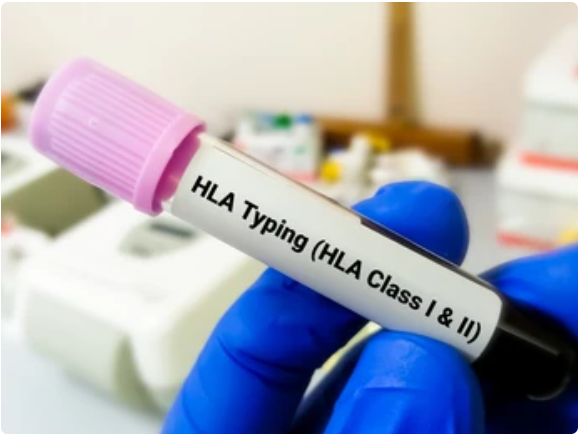The human leukocyte antigen (HLA) system or complex is a group of highly polymorphic genomes on chromosomes that encode major histocompatibility complex (MHC) proteins which are expressed on the surface of cell membrane and are closely related to the immune system. More than 100 diseases are known related to HLA, including autoimmune diseases, immune deficiency diseases, allergic diseases, infectious diseases, metabolic diseases and so on, such as diabetes, rheumatoid arthritis, psoriasis, ankylosing spondylitis, myasthenia gravis and asthma. At the same time, HLAs play important roles in organ and bone marrow transplantation, and are also related to the serious adverse reactions of many drugs. Therefore, HLA typing is widely used in the research of immune-related diseases, population screening of vaccines and drugs, ethnic evolution, tissue and organ transplantation and so on.
HLA system and its’ biological functions
HLA complex, the most polymorphic genetic system in human beings, locates at the short arm 6P21.31 region of chromosome 6, of which all sequence analysis and gene mapping were completed in 1999. 128 of the 224 loci were identified as functional genes, of which 39.8% were related to immune function. According to their distribution and function, HLA can be divided into class I antigen, class II antigen and class III antigen. Classical HLA class I antigens include HLA-A, HLA-B and HLA-C; HLA class II antigens including HLA-DP, HLA-DQ and HLA-DR. Non-classical HLA class I and II are HLA-F, E, H, X, DN, DO, DM, etc. Complements belong to class III molecules. HLA class I is distributed on the surface of almost all cells in the body, while type II is mainly on the surface of macrophages and B lymphocytes.
- Target function
HLA class I antigens distribute in all nucleated cells, whose antigenic specificity lies in the specific amino acid sequence of the antigenic determinant of the peptide chain. These antigens can be altered by foreign substances such as viruses or chemicals, and once altered, they become autoimmunogens and targets for immune exclusion. It can be seen that the essence of the target function is to “identify the self” in order to ensure the integrity of the body. Therefore, HLA’s distribution in all cells and polymorphism is important.
- Recognition function
The recognition function of HLA actually refers to the unique synergistic effect in immune response. Antibodies are produced in B cells, but in most cases, macrophages and T lymphocytes are required. The process is as follows: after the antigen is treated by macrophages, the antigen information is transmitted to T helper cells, which then transmits the information to B cells, so that B cells differentiate into specific antibody-generating plasma cells. In this process, T helper cells recognize not only the antigens on sensitized macrophages, but also detect whether the macrophages are consistent with their own class II antigens. That is to say, T helper cells are activated only when the haplotypes of macrophages are consistent with those of T helper cells, so that the immune response carries on under strict genetic control.
HLA typing and its’ applications
HLA typing methods mainly include serological typing and DNA typing. Serological typing techniques established in the 1960s mainly focus on the analysis of the specificity of HLA products, while DNA typing methods adopted at the 11th International HLA Symposium in 1991 concentrate on analyzing the polymorphism of the gene itself. With the rapid development of sequencing technology, the latter has replaced the traditional serological typing methods. At present, there are two main DNA typing methods: the method based on nucleic acid sequence recognition and the method based on sequence molecular configuration. The main methods based on nucleic acid sequence recognition are PCR-RFLP, PCR-SSO, PCR-SSP and PCR-SBT. PCR-SBT sequencing is the “gold standard” of HLA typing recommended by the World Health Organization (WHO).
- HLA typing in organ transplant
Clinical practice shows that the rejection of allotransplantation (except identical twins) could be the biggest obstacle. In genetics, MHC is passed on as a Mendelian unit. Therefore, there can be three cases of identical, semi-identical and different HLA among siblings. Practice has proved that the success rate of kidney transplantation of sibling donors with the same HLA is more than 90%; the effect of donors with different haplotypes is significantly decreased; and those with different haplotypes rarely survive. The revelation provides an important theoretical basis for transplantation and matching. Organ transplantation is a significant breakthrough of contemporary medicine.
- HLA typing in disease diagnosis
As the research deepens, the relationship between HLA and immunopathology reveals increasingly tight, so HLA is recognized as a genetic factor for screening related diseases. For instance, the identification of T cell surface antigens related to some diseases and the communication between immune effector cells interacting with HLA/HLA ligands extend the application of HLA in biological fields, such as NK cells, T cells, infection, autoimmunity, graft anti-tumor antigen recognition and so on.
- HLA typing in forensic medicine
Because of its high polymorphism, HLA has become a stable genetic marker that can best represent individual specificity and accompany the individual for life. The probability of having the same HLA type among unrelated individuals is low. Forensic medicine uses HLA genotyping or phenotypic testing for individual identification to “identify the correct body”. At the same time, because of its haplotype genetic characteristics, it is also an crucial measurement technology of paternity testing.

